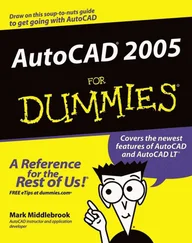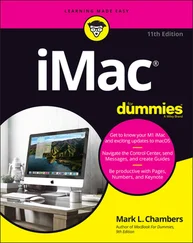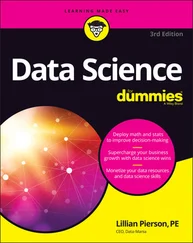After several decades of economic growth, a materialist society evolves into a postmaterialist society. Suddenly, basic economic needs of citizens have been met, and society now is less concerned with economic survival and has money left over to spend on more than just basic needs. The issues society is concerned about also change. Instead of economic security, people now focus on individual freedoms, social equality, and overall quality-of-life issues.
This shift from a materialist society to a postmaterialist society redefines politics in a country. The following changes can be detected:
Religion loses importance in society. Fewer and fewer people attend church services and are willing to base their vote on religious issues.
Union membership declines. With society doing well economically, there’s less of a need for unions and fewer and fewer people are willing to join. In turn, unions are getting weaker in the political realm.
Social class becomes less important in politics. Most of the citizens in a postmaterialist country consider themselves middle class, and class distinctions cease to be of importance.
New issues become important to the public. With people having less to worry about economic security, they can now focus on other issues of importance. These issue include a worry about the environment and social equality. Green movements are born, and issues such as gender equality and gay rights come to the forefront.
People demand more direct democracy. With a society becoming not only more prosperous but also more educated, people want change. They now call for the use of referenda and initiatives to allow for the people to be more involved in policy making.
A more educated electorate is less willing to base its vote on straight political party line. Instead, ticket-splitting becomes commonplace. The whole political process now becomes personal. With people voting less for the party than for the candidate, politics becomes personalized and image driven. People vote for candidates and not a political party anymore. Suddenly, a candidate’s image becomes paramount, and party issue stances matter less.
Part 2
IN THIS PART …
Examine what political scientists do.
Look at comparative politics by comparing the foundations for democracy and the rule of law — constitutions. Examine two constitutions: the U.S. and the New Russian Constitution.
Check out the institutional structures of democracies. Dig in to the legislative, executive, and judicial structures and both parliamentary and presidential systems.
Uncover political processes in democracies, explore political parties and interest groups and their role in democracies, and then evaluate the cornerstone of democracy: voters and voting.
Chapter 4
Discussing Different Forms of Government
IN THIS CHAPTER
 Differentiating the types of government
Differentiating the types of government
 Discussing different democracies
Discussing different democracies
When doing research in political science, a variety of forms of government are found. While many are familiar with the types of democracy, who knows about the differences between authoritarianism and totalitarianism? While there were only a few totalitarian regimes in human history, there are many examples of authoritarian countries today and in the past. Another important aspect when comparing nations are systems of government, which refers to the distribution of power within states. In other words, are countries federal, consisting of states with independent powers, such as the United States, or unitary where all power is held by the central government.
Identifying Types of Governments
When studying political science, you come across a variety of governments. From democracies to totalitarian regimes, governments do vary. What type of government or regime is out there in the world today? Table 4-1gives examples of the various forms of government.
TABLE 4-1Forms of Government
| Forms of Government |
Power Structure-Holder of Political Power |
Examples |
| Monarchy |
One, a king or prince |
Saudi Arabia, Medieval France |
| Aristocracy |
A small ruling elite or class, usually based on hereditary qualifications |
Ancient Sparta |
| Oligarchy |
A small group based on characteristics such as wealth or religion |
Iran, ancient Venice |
| Totalitarian |
One all-powerful supreme leader |
Stalinist Russia and Nazi Germany |
| Authoritarian |
One leader with a small elite |
Egypt, fascist Italy |
| Democracy |
Many; the people |
United States, Great Britain, the Roman Republic |
| Anarchy |
Nobody; no leader or government in charge; can occur during or right after a civil war |
Libya, Somalia |
 The term democracy comes from ancient Greece. Demos in Greek refers to “the people” while cracy means “rule by.” Therefore, the term democracy translates to “rule by the people.” Today, two types of democracies exist.
The term democracy comes from ancient Greece. Demos in Greek refers to “the people” while cracy means “rule by.” Therefore, the term democracy translates to “rule by the people.” Today, two types of democracies exist.
Arriving on the scene first, direct democracy was practiced by the ancient Greeks and Romans. In a direct democracy, the citizens make all decisions themselves. In other words, citizens make policy. They gather on occasion in a large place and discuss and then vote on policies for the state. These policies can include laws or bureaucratic appointments. No politicians are elected because the citizens themselves make all decisions. Direct democracy has become rare. It still exists at the local level in New England and in countries like Switzerland.
A direct democracy is the most democratic form of government in existence. The people themselves make policy for their country. However, it’s tough, almost impossible, to have direct democracy in countries with large populations. The concept worked well in small city-states, such as Athens, or the Roman Republic. It would be unworkable in the U.S. Where would more than 150 million American citizens meet to make policy directly, and how could they ever agree on anything?
The second type of democracy is referred to as a representative democracy. In a representative democracy, such as the U.S. or Great Britain, citizens don’t make policy for the country directly. Instead, they vote for a representative, or office holders, who will act on and make policy on their behalf. If the representatives follow the people’s wishes, implementing policies they support, they’ll get reelected. If, on the other hand, they anger the population, the people can replace them with new and hopefully better representatives.
Representative democracies work well in larger countries and give the people the freedom to disengage from politics. They don’t directly have to participate in decision making. They can pick someone else to do it for them. However, this can result in a major problem. Often, many citizens choose not to participate, allowing for a small minority to take over policy making. In the U.S., for example, almost 40 percent of the people don’t vote for president. Every president for the last 100 years has actually been elected by a minority of the people. Is this still democracy?
Читать дальше

 Differentiating the types of government
Differentiating the types of government The term democracy comes from ancient Greece. Demos in Greek refers to “the people” while cracy means “rule by.” Therefore, the term democracy translates to “rule by the people.” Today, two types of democracies exist.
The term democracy comes from ancient Greece. Demos in Greek refers to “the people” while cracy means “rule by.” Therefore, the term democracy translates to “rule by the people.” Today, two types of democracies exist.










